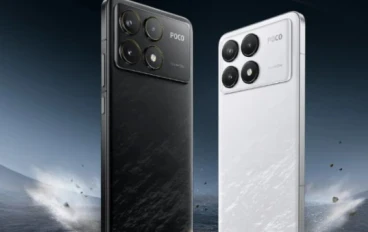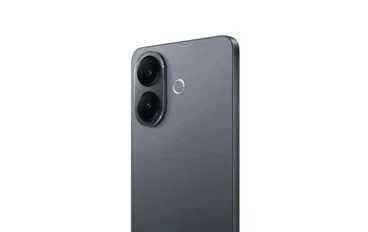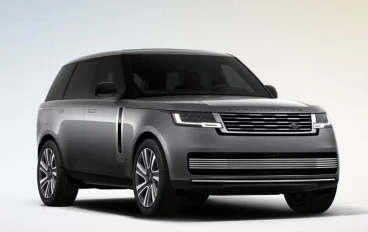
Samsung’s Galaxy Z Flip 4
Foldable displays used to be something you’d see in sci-fi movies in a far-off futuristic setting. But as we’ve seen over the last few years from Samsung, displays that literally fold in half are here, and they’re getting much, much better.
Samsung’s Galaxy Z Flip 4 is a good example of that. The $999 Android-powered smartphone has plenty to offer for that price, including a 6.7-inch display that folds in half, shrinking down the entire footprint of the phone.
The best part? When you open the Z Flip 4, you’re presented with a familiar smartphone design and experience, unlike the more expensive $1,799 Z Fold 4 that gives you a smartphone on the front and a tableThere’s something addictive about taking the Z Flip 4 out of your pocket and flipping it open to reveal a display that spans the entire length of the phone. It’s akin to a $999 fidget toy that also happens to connect to the internet.
Before receiving the Z Flip 4 review unit from Samsung, I’d yet to spend more than a few minutes with a phone that folded in half vertically as the Flip 4 does. I have a Galaxy Z Fold 3 of my own and have thoroughly enjoyed using it over the last year, thanks to the large tablet-like display when it’s opened.
I’ve always thought, however, that the Z Flip 4’s design made more sense because when the phone is opened up, it reveals a 6.7-inch display that looks and works like a traditional smartphone. There’s a fingerprint sensor that doubles as the power button on the right edge of the phone, a volume rocker just above that and a USB-C port on the bottom of the phone for charging and data transfers. When it’s open, outside of the crease that goes across the middle of the display, the Flip 4 is almost indistinguishable from the Galaxy S22+.
The 1080p resolution of the Z Flip 4’s screen is clear and crisp, even though high-end Samsung phones are known for offering higher resolutions. In fact, until I looked up the exact resolution, I assumed the Z Flip 4’s display was similar to the S22 Ultra’s 1440p resolution.
At 6.7-inches there’s plenty of room when using the Z Flip 4 with a single app open. When you start using two apps in split-screen mode, however, the display can begin to feel a bit cramped. It’s entirely possible to have Chrome open on the top half and Gmail on the bottom in order to look something up and share it, but you won’t want to do it all the time.
One thing I did notice while testing the Z Flip 4 is that the screen feels a little soft, compared to a standard smartphone screen. This is likely a byproduct of a foldable display, and is just part of the overall experience but I thought I’d mention it.t in the middle, forcing you to make conscious decisions on which screen to use.
The Z Flip 4’s dual-screen approach isn’t perfect, but there’s a lot to like about the modern flip phone
What we liked about it
An intuitive folding design
On the flip side (sorry, couldn’t help it), when the Flip 4 is closed, you can quickly view notifications and quickly reply to messages with predefined messages, pause or skip tracks, and make mobile payments with Samsung Wallet using the 1.9-inch Cover Screen. You can even launch the camera app from the cover display by double-pressing the fingerprint sensor and use the screen on the front of the phone as a view-finder to take selfies.
I liked the ability to take selfies with the phone closed, but I didn’t love it. You have to tap and swipe across the small display to switch between camera modes, and I found it to be a little clunky overall. I’m sure with a lot more practice it’d be something I wouldn’t mind using in a pinch, but it wouldn’t be my go to method for taking a selfie.
Even though the Flip 4 doubles in thickness when it’s closed, the phone takes up much less space in your pocket and is much more comfortable than a more traditional smartphone to carry around.
Foldable displays still have some kinks to iron out – mainly the fact that there’s a crease that you can see and feel – but it’s amazing technology that looks and feels like it’s the future of smartphone design. Only you can use it right now.
Solid performance and battery life
Inside the Galaxy Z Flip 4 is the Qualcomm Snapdragon 8+ Gen 1 processor, 8GB of memory, 128GB of storage and a 3,700 mAh battery. All of those components combine to create a pleasant experience, both when it comes to overall performance and battery life.
Over the last week, I’ve yet to run out of battery during a typical day of use and during two different days of traveling from Colorado to New York. Those days consisted of an abundance of testing the cameras (more on that in a minute) along with streaming and downloading Spotify playlists while testing Samsung’s new Galaxy Buds 2 Pro wireless earbuds.
Backing up my personal experience with solid battery life is the test result of running down the Z Flip 4’s battery by playing a 4K video on loop. The result? 14 hours of continuous playback. While that score isn’t as long as the OnePlus 10 Pro’s 18 hours and 46 minutes, it’s on par with the Galaxy S22+ and S22 Ultra, both of which have larger capacity batteries.
As far as performance is concerned, I was impressed with how smooth the Z Flip 4 was in use. From opening games to quickly switching between the likes of Slack and Twitter while playing a YouTube video in picture-in-picture mode, I never noticed any slowdowns.
I used the benchmarking app Geekbench 5 to compare the Z Flip 4’s performance scores to other smartphones – and as expected, the Z Flip 4 performs slightly better than the Galaxy S22+ and S22 Ultra, both of which use the Snapdragon 8 Gen 1 (note it’s not the 8 Plus Gen 1) processor. The Z Flip 4 scored an average of 1,315 for single-core and 3,838 for multi-core use, which is ahead of what we got from the S22+ by a good margin. However, the iPhone 13 Pro Max and its A15 Bionic processor still delivered significantly faster benchmark speeds than Samsung’s phones, scoring 1,739 and 4,675 on single- and multi-core performance respectively.






























